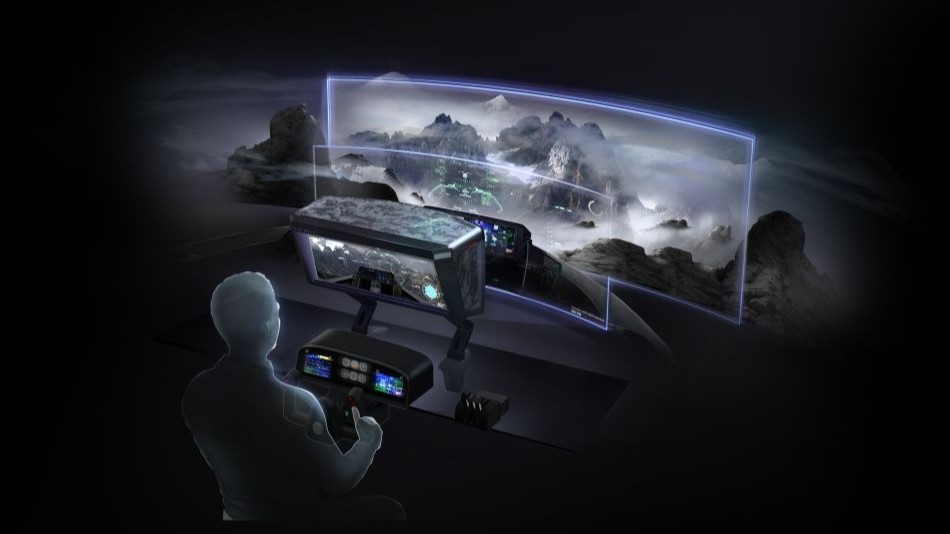Virtual Reality Without the Clunky Headsets
Virtual Reality Without the Clunky Headsets


A special light-processing layer is key to making displays that deliver rich and compelling visuals that simulate the real world.
Picture an elevator with mirrors placed both in front and back. The result is an endless series of cascading reflections. Now, imagine taking each of these reflections and superimposing them in a timed sequence. You would get a rich, multi-layered image with perspective, much like snapshots of the real world. Such manipulation of light is the driver behind Brelyon, a startup that is commercializing displays that can deliver much more than typical desktop or television screens.
Brelyon has set its immediate sights on the virtual reality (VR) market, hoping that the visual content its processing techniques deliver will be rich enough to eliminate the need for clunky headsets. CEO Barmak Heshmat came upon the concept for Brelyon when he was a post-doctoral associate at the Massachusetts Institute of Technology and later, while working at Meta on VR/AR headsets.
“I realized that the problem is that people love the immersive experience of headsets, but they just don’t want something on their face. They just don’t want to wear them. So, I constantly wondered if there was a way to achieve that immersion without a headset,” Heshmat said.
A light-processing layer
The rich and layered images that Brelyon delivers originate from a processing layer between the light source and the screen that captures and bounces photons around in a cavity to create more immersive pictures.
Simple optical systems manipulate light to create an image on the sensor. Brelyon’s technology processes the light before it goes out into the world, Heshmat explained. The processing layer includes an “optical cavity that bounces the light between multiple optical layers several times before we let it out,” he said.
In addition, the Brelyon system studies the visuals populating the display unit and renders complementary content in real time. Brelyon makes full use of the high-bandwidth experience by leaning on generative rendering architectures.
Discover the Benefits of ASME Membership
“For example, if you are playing a game in a jungle environment, the processing of our display will be able to understand that context and would add a layer of particle effects like leaves and trees. So, you feel more immersed in that jungle,” Heshmat said.
In effect, the Brelyon technology delivers both intense light displays and more realistic looking imagery for an immersive experience.
Where to access
This technology can be integrated into any size of equipment—from headsets to televisions. “The field of view, how much movement you want to have in front, the experience you want to get, the aperture and efficiency of the optics, all dictate the size you can access the technology in,” Heshmat said.
While there are no size restrictions, manufacturing larger optical layers that accommodate the light-processing with the accuracy required will likely be more complex and expensive. It is why Brelyon is focusing its efforts on desktop-sized equipment for now.
Getting there was not without challenges. Educating the market was a big one as was getting the optics and the processing layer to work.
More for You: VR and AI Fuel Actionable Performance Training
The startup sells two types of equipment. Ultra Reality provides a single layer of monocular depth and a large field of view like a VR headset. It is mostly meant for simulation training, network operation centers, and the entertainment businesses. A newer product offers two layers of depth instead of one for a more immersive experience. The goal is to make incremental progress with the addition of layers, much like television sets moved from HD to 4K and 8K, Heshmat said.
The Brelyon units are priced for the enterprise market. “Usually the path to bring technology on a mass scale is to find a fit in specialty markets first,” Heshmat said. Once volume picks up, they can target the consumer, he added.
What’s next
Future plans include making more use of the display rather than having the associated desktop do all the heavy work of rendering images. “In the future, we will have more generative displays where they have processing capabilities that give a far better experience than what your laptop can deliver. That would help us to redefine the desktop category into a much richer computer experience,” Heshmat said. Another focus might be on making the displays thinner—they are currently around 18 centimeters thick on average.
And while early iterations target the enterprise visualization market, the broad impact of the technology can soon come to the gaming market and a regular screen near you. “It is just a matter of manufacturing infrastructure to get it to every television and every cellphone display. It is really exciting to look at the many possibilities ahead of us,” Heshmat said.
Poornima Apte is a technology writer based in Walpole, Mass.



